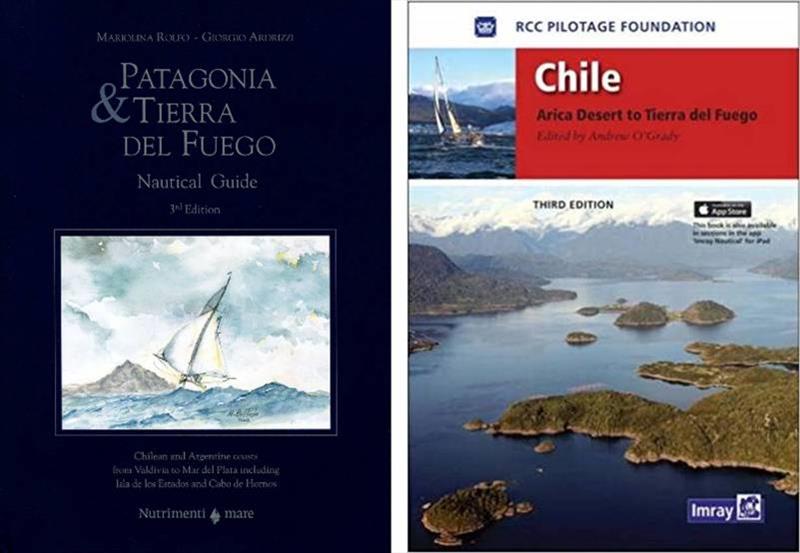
Sailing in Chile: Part 3 - Interpreting the Guidebook
by Karina McQueen & Gary Peacock 5 Feb 2020 17:05 UTC

Guidebooks © Karina McQueen & Gary Peacock
There are two sailing guidebooks for cruising in Chile:
- "Patagonia and Tierra del Fuego", also known as the "Italian Guide", as it was published by an Italian couple who spent 11 years sailing in the channels
- A guidebook published by the "Royal Cruising Club" of England.
Both are very good and cover the vast majority of anchorages on the routes most often travelled in the Patagonian canals. We read both books cover-to-cover multiple times last season, while cruising from Valdivia to Laguna San Rafael and back up to Puerto Montt.
Guidebook writers must be a curious breed. While they provide incredibly useful information in terms of what to expect in an anchorage or in a general area, they don't always give that information in a straightforward manner. We noticed this while sailing in northern BC, and it seems to be true in Chile as well.
Phrases such as "tight anchorage" and "limited swinging room" should actually say "if your boat is bigger than 30 feet and has a draft greater than four feet, don't even bother trying to anchor here". Minimum depths of three metres on the anchorage site diagrams are clearly just a guide. In reality a depth listed as three metres could just as easily be two metres... the reader is just supposed to understand that it gets very shallow near that spot.
We encountered a new Guidebook term last season: "irregular bottom". We, like most people, interpreted those words to mean that the depths would be uneven throughout the anchorage. But in Caleta Brooks, one of the bays we anchored in last season, they should have written "there are five uncharted rocks that lie 2.3 metres below the surface at low tide. Beware as the depths change from 13 metres to 2.3 metres instantly." But alas, they left that for us to discover for ourselves. Note: Our keel draws 2.3 metres.
Luckily it wasn't low tide when we entered the anchorage and so we still had one metre beneath the keel when we "discovered" the first, second and third rocks. We had visual sightings on rocks four and five, so they didn't pose any immediate danger.
As the rocks were virtually invisible under the water until we were right on top of them, we wondered how we were going to get out of the anchorage the next morning, as we were planning to leave when the tide would be lowest. We didn't want our 2.3 metre keel to meet the 2.3 metre rocks. As we clearly couldn't just follow our GPS track out of the anchorage, we needed to find a clear, deep water path between the rocks. So, out came the hand held depth sounder and we jumped in the dinghy. I took depth and GPS readings while Gary rowed us around the bay.
Having located several deep spots, we then attempted to map out a line of "safe passage" that would lead us out of the anchorage. This proved very challenging, as the person reading the depth and GPS position (ie, me) also had to make sure that the person rowing, who was sitting backwards in the dinghy (ie, Gary), was rowing in a straight line. We are not sure how we didn't get divorced.
But, miraculously, when we returned to the boat and Gary entered the GPS positions we had identified onto our cached Google Earth images (where, as it turns out, we could actually see the five rocks under the water), we had mapped out a perfectly straight line in the deep water between the rocks. A miracle! We then entered those way points into our chart plotter, and voila!
We had a safe path to leave the anchorage at low water. Of course, if we had looked at Google Earth BEFORE entering the anchorage, none of this would have been required as we would have known about the existence of the rocks and could have mapped their location in advance. Another lesson learned for next time.
This article has been provided by the courtesy of Bluewater Cruising Association.